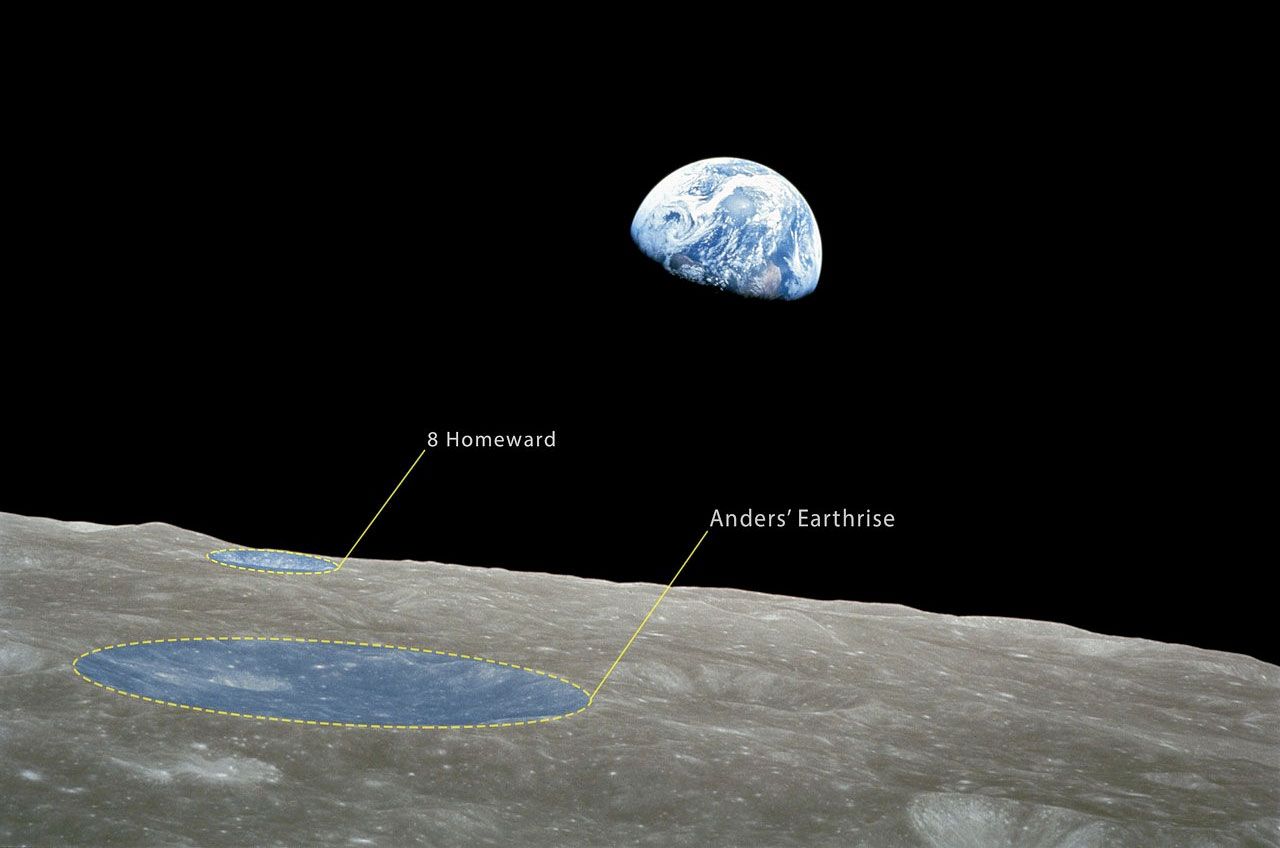A lunar crater recognized globally due to its prominent depiction in the iconic “Earthrise” photograph has recently played a pivotal role in the search for extraterrestrial life. The crater, known as Anders’ Earthrise, spans nearly 25 miles (40 kilometers) across the far side of the Moon and has been viewed by numerous individuals since it featured in the famous image captured by astronaut William Anders during the Apollo 8 mission on December 24, 1968. The photograph, which showcases a half-lit Earth rising above the lunar surface, was so impactful that the crater was renamed in Anders’ honor in 2018.
Recently, the Jupiter Icy Moons Explorer (JUICE) spacecraft, launched in April 2023 and set to reach Jupiter by 2031, observed Anders’ Earthrise as part of its mission to investigate potential habitability on Jupiter’s moons. During a flyby nearly a year ago, mission scientists utilized this encounter to conduct tests on JUICE’s ten scientific instruments, particularly focusing on the Radar for Icy Moon Exploration (RIME).
Testing Instruments for Future Discoveries
The flyby provided the first opportunity for JUICE to evaluate its instruments on a solid surface in space. According to representatives from the European Space Agency (ESA), RIME, which employs radio wave echoes to assess elevation on rocky bodies, was a key focus. Its objective at Jupiter is to analyze the icy surfaces of moons Europa, Ganymede, and Callisto to map the underlying rocky layers.
To maximize RIME’s performance, ESA scientists muted all other instruments on the probe for eight uninterrupted minutes while it observed Anders’ Earthrise crater. This silence was crucial for RIME to accurately detect changes in radio waves, which enabled it to produce detailed elevation maps of the crater. These maps were then compared with previous measurements collected by other spacecraft, including NASA’s Lunar Orbiter Laser Altimeter (LOLA).
Following the analysis, scientists discovered that electronic interference from JUICE was affecting RIME’s measurements. This led to the development of a new algorithm aimed at correcting the discrepancies, a project that has since proven successful.
Mapping the Moon and Searching for Life
The newly created elevation map of Anders’ Earthrise crater aligns closely with data obtained by LOLA during past lunar missions. This consistency confirms that RIME is prepared for its primary task of exploring the subsurface of Jupiter’s largest moons, which is critical in the ongoing quest for signs of life.
With extensive work still ahead, JUICE is now en route to Venus, where the planet’s gravitational pull will assist the spacecraft on its journey to Jupiter. Ultimately, JUICE is expected to conduct 35 flybys of Jupiter’s significant moons before entering orbit around Ganymede from December 2034 to September 2035. The insights gained from studying Jupiter and its moons will not only enhance our understanding of gas giant formation but also aid in detecting potential signs of life beneath the icy crusts of these massive celestial bodies.
This groundbreaking research highlights the ongoing efforts to unravel the mysteries of our solar system and potentially find extraterrestrial life. As scientists continue to explore these distant worlds, the legacy of the original “Earthrise” photograph endures, inspiring future generations in the search for life’s existence beyond Earth.







































































